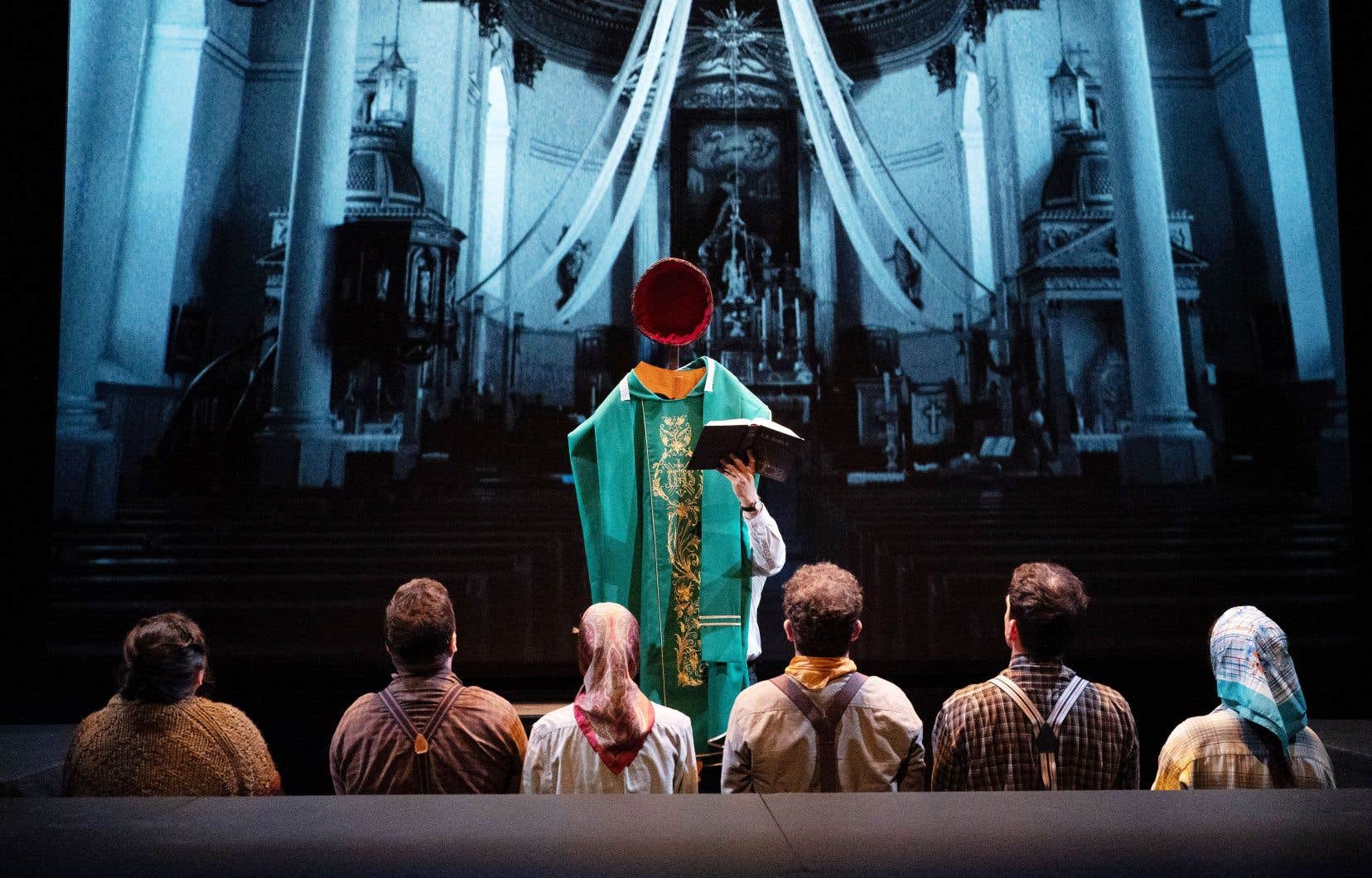Faced with this upcoming adaptation of the documentary For the rest of the world, some apprehensions could arise: would the actresses slip into the shoes of Alexis Tremblay, Léopold Tremblay and other Abel Harvey by trying to make us believe in the subterfuge? The La Trâlée team, led by Lorraine Côté, has visibly pushed further than the average theater critic.
It’s visible from the moment the curtain rises, a few historical notes setting out from the outset the context of the creation, in 1962, of the documentary by Pierre Perrault, Michel Brault and Marcel Carrière, the first Quebec or Canadian feature film to be screened at the Festival of Cannes in official competition. This critical apparatus, from world cinema to Quebec ferment, will allow a first step of distance.
A second, major one, will relate to the choices of play. Episodes of this famous “porpoise hunt” will indeed be replayed, the troupe resuming the initial discussions on L’Isle-aux-Coudres, the episode of the priest in the pulpit, the installation of “harts” in the water of the river. However, the effort is minimal: poor costumes in an absence of decor, shadow puppets, figurines or fingers sometimes as characters. It’s a shoddy, schoolyard setting, where the success of the show is hidden.
Because this paltry, even ridiculous, device forces the imagination of a public called upon to fill in the gaps, to travel the last bit of the way to find the underlying story. Here we find the same team which, with Rashomon (2019), succeeded, with utensils as characters, in reviving Kurosawa’s story. Relieved of the task of making it true, the team concentrates on something else.
Find the gesture
The lines are superimposed on this bare scene, a screen in the background showing some images from the documentary – we mainly stick to the allusion. Between two replayed episodes there follow, in the mouths of Perrault, Brault and Carrière embodied on stage, numerous anecdotes, which denote the care which accompanied this creation at La Bordée.
Various considerations on the technical aspect – the heaviness of the cameras or recorders, the absence of post-synchronization – reveal the challenging nature of this standard of direct cinema, at the same time as they reveal what the project was in concrete terms. The piece, quietly and joyfully, allows us to rediscover the gesture.
Ditto with these anecdotes exposing Perrault’s interest in encounters, curiosity at the heart of his approach. While the show advances with chapters, projected titles marking the progression and not hesitating to play amused winks, the successive episodes crystallize casually the strange human quality it took to produce a such a film.
A sequence where the team became a Perrault-style filmmaker to introduce current inhabitants of L’Isle-aux-Coudres, if it is a felt homage, will perhaps fit less perfectly into the bill of ‘together. From one end to the other, the show nonetheless manages this feat of rediscovering the very concrete genius of the celebrated monument, sometimes frozen in its praise.
The room For the rest of the world, sixty years after the release of this documentary consubstantial with Quebec speaking out, finds support in its future. Moving, it constitutes the nice surprise of this theatrical return.
